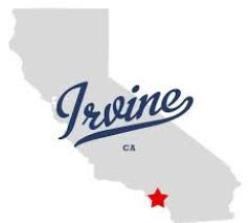About 100 years ago, when interests in the new-fangled motor coaches began pushing for their proper place on the roads and streets of cities, one line of argument they used was the future, modernity.  You can’t fight progress, you horse-and-buggy rubes. Get out of the way (literally), a new world is dawning! Only cavemen wouldn’t want to be behind the wheel of this shiny new mode of transport, the automobile!!
You can’t fight progress, you horse-and-buggy rubes. Get out of the way (literally), a new world is dawning! Only cavemen wouldn’t want to be behind the wheel of this shiny new mode of transport, the automobile!!
(Peter Norton’s Fighting Traffic is a fantastic primer in how hearts and minds were won over to the car’s cause by expert p.r. and lobbying).
Now, pretty much a century later, a similar line of argument is being made hailing the imminent arrival of autonomous vehicles, the self-driving car. They are the future, and only stick in the mud luddites would fight the future. Because of this, because autonomous vehicles will transform the way we get around our urban environment, will cure the ills that the previous automobile age inflicted upon us, who in their right mind could possibly object? Resistance is futile.  Just sit back, load up Netflix on your laptop, and let the computer drive you to where you need to go.
Just sit back, load up Netflix on your laptop, and let the computer drive you to where you need to go.
There’s no question autonomous vehicles will improve certain aspects of urban transportation. By eliminating driver error, misjudgement, distraction, it’s conceivable that traffic flow will improve, fatalities will drop significantly. That’s all to the good, no argument from me there.
What autonomous vehicles won’t solve is the sticky point of induced demand. We do know for a fact, after decades and decades of observation, that whenever we endeavour to make driving easier or more attractive – like increasing road space – more people take advantage of it and rush out to fill up that space. Congestion is never alleviated, at least not for very long. Self-driving may make being stuck in traffic less unpleasant but they will not solve what is essentially a ‘geometry’ problem, as Jarrett Walker wrote ten days ago in Human Transit.
An equally intriguing aspect of the self-driving car among us is what’s being called the moral or ethical algorithm behind its programming.  While autonomous vehicles will certainly reduce our current road carnage, there’s no reason to believe collisions will be eliminated entirely. If not, what should our expectations be in terms of outcomes?
While autonomous vehicles will certainly reduce our current road carnage, there’s no reason to believe collisions will be eliminated entirely. If not, what should our expectations be in terms of outcomes?
The ‘utilitarian’ autonomous vehicle, as it’s being called, might be programmed for the greater good. That is, when faced with a situation where a collision is inevitable, an autonomous vehicle responds by inflicting the least damage possible including ‘sacrificing’, let’s call it, its own passengers if that keeps the harm inflicted to a minimum. Essentially, if forced to choose between the prospect of swerving into a crowd of 10 pedestrians standing on the sidewalk to avoid an object straight ahead of it or crashing into that object, the utilitarian autonomous vehicle will crash into the obstacle, endangering the lives of the <10 passengers inside of it.
If it happens, of course, and if proponents of self-driving cars are to be believed, it won’t happen very often if at all, because, you know, technology rarely comes with bugs or glitches, but if collisions do occur, as infrequently as they might, we can rest easy in the knowledge that the greater good will be served. Done, and done.  We’re good here, right?
We’re good here, right?
Apparently, it’s not going to be as clear cut and simple as all that. The future, when it comes, seldom is.
In a study published in the journal Science back in June, Our driverless dilemma, researchers found in a series of online surveys conducted, most people were all for the ‘utilitarian’ approach to self-driving cars, the greater, collective good, in theory. But when it came to driving one themselves? Public safety for others, self-preservation for me. This double standard hardened even further when questions of driving with family members arose. My child or some stranger standing on a street corner? I’ll take Ridiculous Questions for $500, Alex.
This should hardly come as a surprise. Traffic is other people, right? After the freedom of the open road with the wind blowing back your hair angle that car manufacturers use to advertise their product, the 2nd approach is always about safety, especially safety for the children riding, buckled up in the backseat. Bigger, bulkier vehicles not only promise to deliver an elevated status on their owners but also bestow a sense of security on all those riding within.  Damage control on the inside with a big, fat fuck you to everything and everyone on the outside.
Damage control on the inside with a big, fat fuck you to everything and everyone on the outside.
Rather than some theoretical undergrad philosophy exam question, this presents a much fuzzier future for self-driving cars. As the study’s researchers suggest, if people will be less inclined to buy or ride in autonomous vehicles that don’t put their safety first, who’s going to manufacture them? Will governments then bend to the will of those who’ve invested mightily in a driverless future, and maintain the status quo of acceptable losses on our roads, fingers crossed that they will be radically less than the numbers we’ve learned to live with? Is that the kind of future we should be building toward, Just like now, only less?
“Before we can put our values into machines,” Joshua Greene writes in Science, “we have to figure out how to make our values clear and consistent.”
 When it comes to prioritizing transportation choices, our values have been very clear and consistent. The safety, comfort, convenience of car drivers has been the number one value for the better part of a century now. That’s the reason for the sprawling, congested mess cities currently find themselves in. If we don’t take the opportunity this new technology offers us to challenge and change that single-minded approach to urban mobility, it will hardly matter who or what is behind the wheel. The future on our roads won’t look a whole lot different than the present.
When it comes to prioritizing transportation choices, our values have been very clear and consistent. The safety, comfort, convenience of car drivers has been the number one value for the better part of a century now. That’s the reason for the sprawling, congested mess cities currently find themselves in. If we don’t take the opportunity this new technology offers us to challenge and change that single-minded approach to urban mobility, it will hardly matter who or what is behind the wheel. The future on our roads won’t look a whole lot different than the present.
— skeptically submitted by Cityslikr



 Posted by cityslikr
Posted by cityslikr 





































